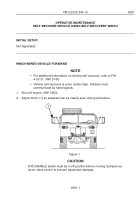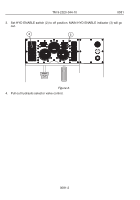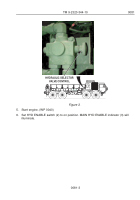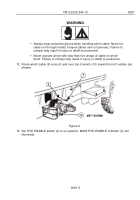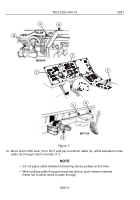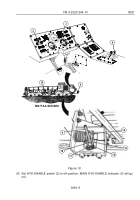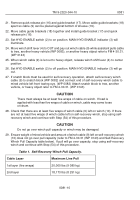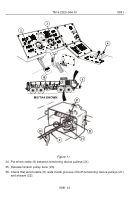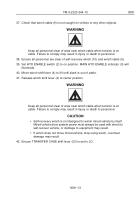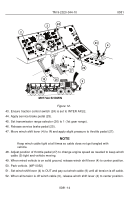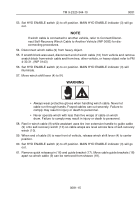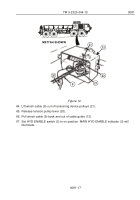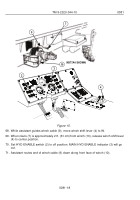TM-9-2320-344-10 - Page 510 of 1012
21. Remove quick release pin (16) and guide bracket (17). Move cable guide brackets (18)
apart so cable (9) can be placed against bottom of sheave (19).
22. Move cable guide brackets (18) together and install guide bracket (17) and quick
release pin (16).
23. Set HYD ENABLE switch (2) to on position. MAIN HYD ENABLE indicator (3) will
illuminate.
24. Move winch shift lever (4) to OUT and pay out winch cable (9) while assistant pulls cable
to tree, another heavy vehicle (WP 0083), or another heavy object refer to FM 4-30.31.
(WP 0143)
25. When winch cable (9) is let out to heavy object, release winch shift lever (4) to center
position.
26. Set HYD ENABLE switch (2) to off position. MAIN HYD ENABLE indicator (3) will go
out.
27. If snatch block must be used for self-recovery operation, attach self-recovery winch
cable (9) to snatch block (WP 0082) and connect end of self-recovery winch cable to
mired vehicle left front towing eye. (WP 0083) Attach snatch block to tree, another
vehicle, or heavy object refer to FM 4-30.31. (WP 0143)
CAUTION
There must always be at least five wraps of cable on winch. If load is
applied with less than five wraps of cable on winch, cable may come loose
on drum.
28. Check that there are at least five wraps of winch cable (9) left on winch (10). If there
are not at least five wraps of winch cable left on self-recovery winch, stop using self-
recovery winch and continue with Step (54) of this procedure.
CAUTION
Do not go over winch pull capacity or winch may be damaged.
29. Ensure weight of mired vehicle and amount of winch cable (9) left on self-recovery winch
(10) does not go over pull capacity (refer to FM 4-30.31 (WP 0143) and Self-Recovery
Winch Pull Capacity table below). If pull will go over capacity, stop using self-recovery
winch and continue with Step (54) of this procedure.
Table 1.
Self-Recovery Winch Pull Capacity.
Cable Layer
Maximum Line Pull
1st layer (five wraps)
20,000 lbs (9 080 kg)
2nd layer
18,173 lbs (8 251 kg)
TM 9-2320-344-10
0081
0081-10
Back to Top


